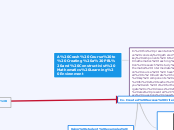A Crash Course to Creating a PBL and Constructivist Mathematics Learning Environment
In this presentation I have concisely gathered the key components to effective mathematics teaching based on research study for Mathematics Intermediate Qualification course. I have attempted to illustrate how these key components will look for a teacher. Should you wish to further investigate or discuss a specific area presented, or have questions please ask.
Learning Goals &
Big Ideas
To begin teachers plan units with the overall expectations, specific expectations, learning goals and BIG IDEAS in mind.
Co-Created Success Criteria
Watch this video to see how
teachers plan with the learning
goal and success criteria in mind.
Using student examples, and with the teachers learning goals and BIG IDEAS in mind, co-create with students success criteria.
Problem Based Learning
This is where the problem based learning (PBL) and constructivist begin. Students are given open questions and parallel tasks where they can have multiple entry points (DI) while deriving their own methods for solutions.
Here is a great article by Marian Small that demonstrates
a great example of open questions and parallel tasks.
A 3 part lesson is used to introduce
problems to students. Watch this video
for a better understanding of the 3 part lesson.
